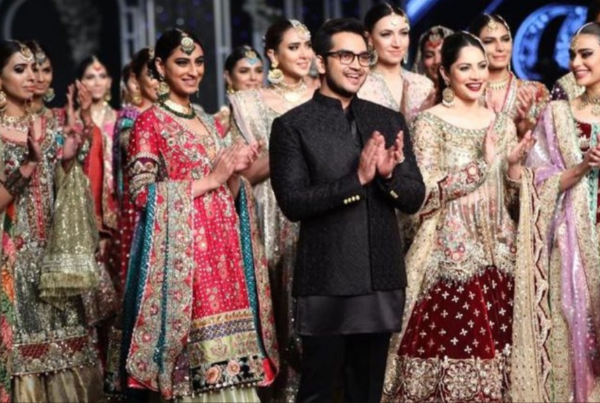Published in Instep, The News on Jan 18, 2010
If only empire line waistbands could become a cause for suffocation!
 It is a rather unusually violent thought to begin a fashion column with but having seen one empire line waistband too many is reason enough to become trigger friendly. This is for all my friends out there who have at some point asked their tailors to cause unnecessary emphasis on the bust with this completely unsuitable style. Unsuitable for the well-endowed Pakistani woman, that is.
It is a rather unusually violent thought to begin a fashion column with but having seen one empire line waistband too many is reason enough to become trigger friendly. This is for all my friends out there who have at some point asked their tailors to cause unnecessary emphasis on the bust with this completely unsuitable style. Unsuitable for the well-endowed Pakistani woman, that is.
The empire silhouette originated in France and was created to give women something less cumbersome or less confining to wear. With the corset tightening the life and breathe out of women, it was a welcome and significantly liberating fashion improvisation. So far so good. Okay, so the trend made it to the Islamic Republic of Pakistan centuries later in 2009 (or maybe it was a comeback since the trend did pick up back in the sixties too) and women being women took their yards (and yards) of ribbon (depending on their girth) asking puzzled tailors to give them a belt under the bust line. For all practical purposes, this raised waistline was created by a patti that went around the body and tied up at some point. The fact that it would put emphasis on the double Ds was trivia that everyone conveniently overlooked. The double Ds suddenly became dumb and dumber.
The empire line waistbands struck in full glory, from simple satins to super sexy in sequins. And they graciously embellished every body type. Now since there are very few size zeros out there, you can imagine the fashion disaster that it became. It was difficult to decipher whether the darts were more constricting or the raised waistbands. As women, we in Pakistan, love to show off our voluptuous bodies with tight clothing (before we cover them up) and the patti under the bust-line very soon lowered in dimension to emphasize the waist and eventually even went around the hips causing figure hugging joy to ever watchful eyes on the lookout. And this ‘belt’ (no matter where it was or what it emphasized) was stitched to bring contrast to the outfit, like solid black on a black and white print. (Gives a whole new meaning to black belt, doesn’t it?) Either way, it was and is an absolute no-no when it comes to fashion. 
Originally the empire silhouette (one that was delicately belted under the bust) was considered perfect for pear shaped women (yes, that’s most of us) or women with tummies (that’s almost all of us). Its long, flowing silhouette was designed to elongate the structure and hide flaws. A shalwar was certainly never part of the original design and the empire-silhouette gowns didn’t translate very well to traditional shalwar kameezes designs. The garish trend that had all of us believing we were in nineteenth century Paris actually made us stick out like a sore thumb. In an unaesthetic, anatomical kind of way.
Some of my friends adapted the trend, but they wore it on short kurtas, that too over a pair of denim jeans or trousers, which made it very Bohemian. And these friends of mine, categorized as the ‘fashionably-under-nourished-anorexic-size-zero’ types, could carry it off over their 22 inch waists. While the empire silhouette was designed to hide flaws, on my friends it just emphasized their wasp-waisted figures. If that describes the way you look too, then by all means wear the empire silhouette and emphasize your fashionably flat chest.
For the rest of the female population, this trend should rest in peace. May the empire silhouette or simply put, the patti, never strike the shalwar kameez again, lest Parisian couturiers find out and sue us for it!






sitenizde yer alan bilgiler cok kaliteli